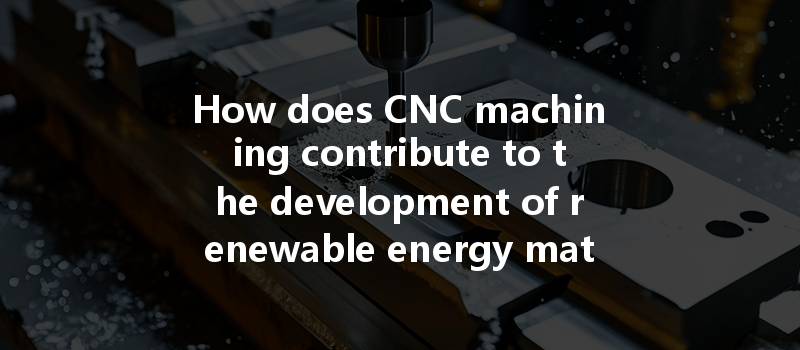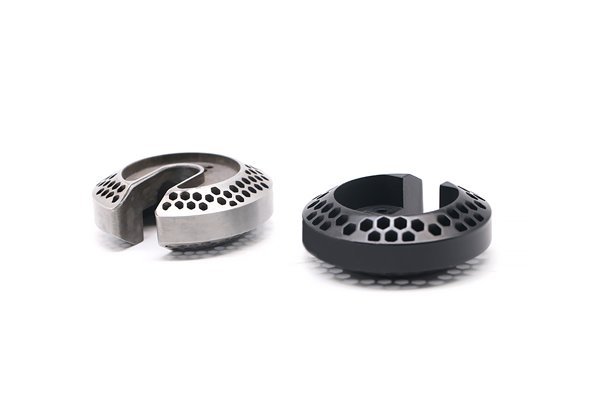Did you know that by 2050, the renewable energy sector is projected to create 24 million jobs globally? This staggering statistic not only reflects the urgency of transitioning toward sustainable energy sources but also highlights the increasing demand for advanced materials and technologies that can support this endeavor. Among these technologies, CNC (Computer Numerical Control) machining stands out as a crucial player, enabling precise fabrication and optimization of renewable energy materials. In this blog, we will delve deep into the essential role of CNC machining in the development of renewable energy materials, unpacking its advantages, challenges, and future prospects.
Understanding CNC Machining in the Context of Renewable Energy
CNC machining is an automated technology that utilizes computer software and robotics to control machine tools, employing precise measurement for cutting and shaping materials. While traditional machining methods rely heavily on human intervention, CNC machining boosts efficiency and accuracy, reducing waste and labor costs. This procedural evolution is especially significant in the renewable energy sector, characterized by a rapidly growing demand for highly specialized materials.
The Role of CNC Machining in Renewable Energy
The wind energy sector is one of the fastest-growing branches of renewable energy. The production of wind turbines, from blades to gearboxes, requires high-strength materials that can withstand extreme weather conditions. CNC machining provides several integral benefits:
Solar panels are essential in harnessing solar energy, and their components require specific designs for maximum light absorption. CNC machining plays a pivotal role in this area:
As renewable energy systems proliferate, energy storage becomes increasingly vital. CNC machining is key in developing advanced battery technologies and storage solutions:
Challenges Facing CNC Machining in Renewable Energy

Despite its many advantages, the use of CNC machining in the renewable energy sector comes with several challenges:
Certain advanced materials, such as ceramics and composites, can pose difficulties in machining due to their hardness and brittleness. These materials, while excellent for renewable energy applications, often require specialized tools or techniques to cut and shape, which can increase production time and costs.
CNC machinery can be expensive, particularly the state-of-the-art models capable of handling various materials and processes effectively. For smaller companies or startups focused on renewable energy technology, this financial barrier can be a significant roadblock.
As CNC technology becomes increasingly sophisticated, the demand for skilled machinists familiar with its operation and programming rises. A shortage of skilled professionals can hinder the ability to produce high-quality renewable energy components.
Future Prospects of CNC Machining in Renewable Energy
Looking to the future, the role of CNC machining in renewable energy development will likely evolve through technological trends and innovations:
The integration of artificial intelligence in CNC machining promises to improve precision and efficiency. Advanced algorithms can optimize machining processes, reduce downtime, and enhance quality control, increasing the overall output in renewable energy manufacturing.
CNC machining can also become a more sustainable process itself by employing eco-friendly practices. Waste reduction through optimization and recycling of materials can make CNC machining more aligned with the principles of renewable energy.
As new materials are developed—such as lightweight composites and advanced alloys—CNC machining will likely adapt, allowing for even more innovative applications in renewable energy technologies.
: Embracing the Future of Renewable Energy with CNC Machining
CNC machining is revolutionizing the development of renewable energy materials, paving the way for innovation and efficiency in the sector. Its precision, versatility, and capability for rapid prototyping are instrumental in manufacturing wind turbine components, solar energy technologies, and advanced energy storage solutions. Despite challenges like material limitations and costs, ongoing advancements in technology and materials are set to bolster CNC machining’s importance in renewable energy.
As we strive toward a sustainable energy future, it is crucial for stakeholders in the renewable energy sector to recognize the invaluable contributions of CNC machining to material development. The intersection of precision engineering and environmental responsibility holds the key to unlocking the full potential of renewable energy resources.
In summary, CNC machining is not merely a manufacturing process; it is a critical component of the renewable energy landscape. By understanding and harnessing its benefits, we can move forward into a world powered by cleaner energy, abundant with opportunities.






